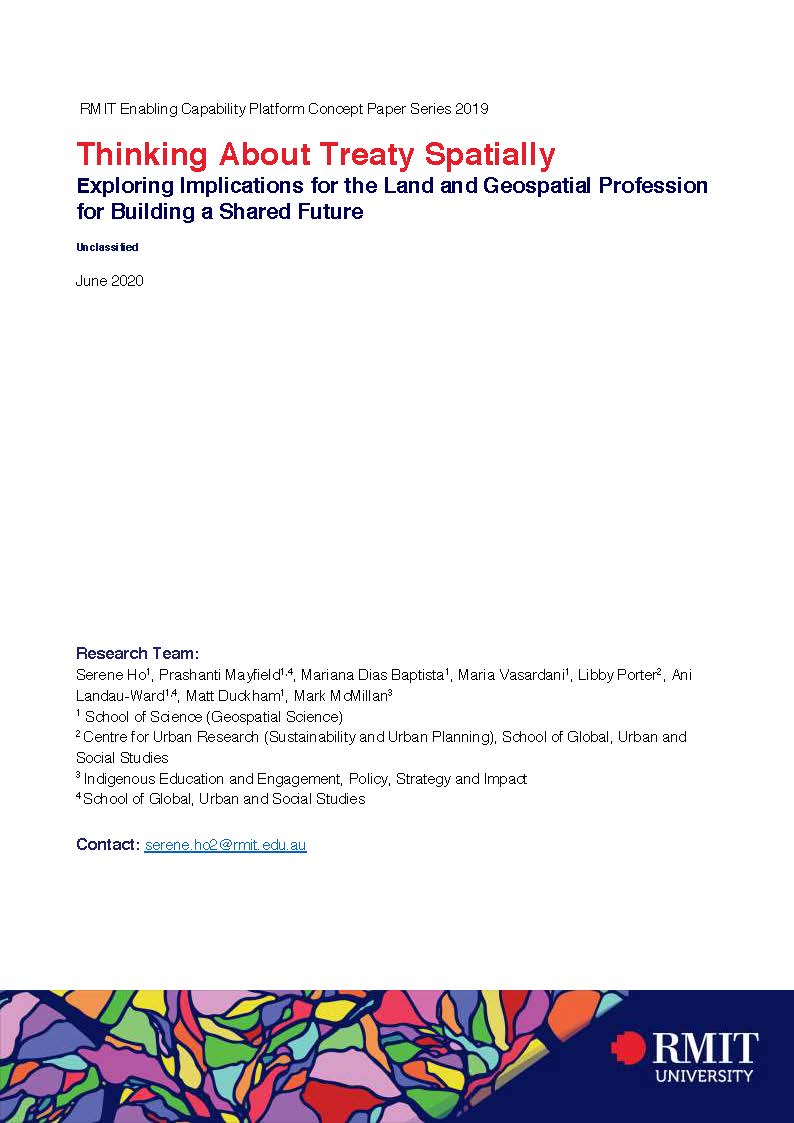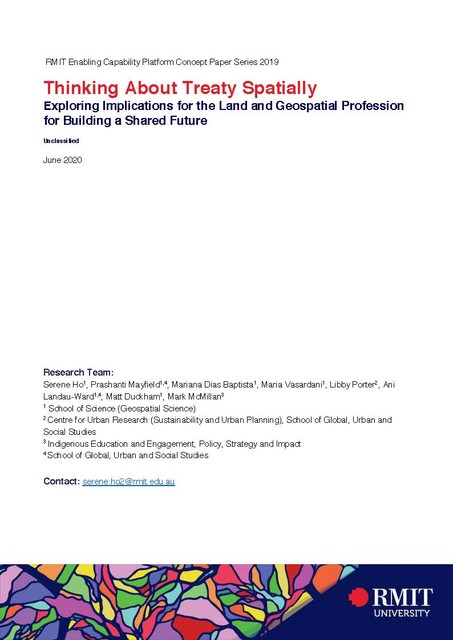Thinking About Treaty Spatially
June 2020

Exploring Implications for the Land and Geospatial Profession for Building a Shared Future
Serene Ho, Prashanti Mayfield, Mariana Dias Baptista, Maria Vasardani, Libby Porter, Ani Landau-Ward, Matt Duckham, Mark McMillan
Summary
In 2018, the Victorian government passed Australia’s first-ever treaty law (State Government of Victoria, 2018) but the new treaty legislation is startingly silent on any direction on spatiality. This reflects a wider silence in both Victorian and federal legislative frameworks which ignore the spatial dimension of treaty negotiations. It leads to the questions: to what places does a negotiated treaty apply, and how should/will treaty affect the use, management, access and ownership of Country, embodying land, water, air, flora, fauna and mineral resources?
Many land and geospatial professionals will find themselves playing a role in helping to address these questions, whether as researchers, consultants, or public servants. The use of spatial data and geographic information systems (GIS) have become mainstreamed as a policy tool, but there are recognised difficulties in applying western-oriented GIS to Indigenous knowledge. Therefore, the central question addressed in this Concept Paper is: What might the spatial implications of treaty be for land and geospatial professionals?
Citation
Ho, S., Mayfield, P., Dias Baptista, M., Vasardani, M., Porter, L., Landau-Ward, A., Duckham, M. and McMillan, M. (2020). Thinking About Treaty Spatially: Exploring Implications for the Land and Geospatial Profession for Building a Shared Future. RMIT Enabling Capability Platform Concept Paper Series 2019 (CP 1904). Melbourne: RMIT University.
If you would like to get involved with this project, fill out the form below or reach out to project leaders via the contact info provided alongside each bio.

